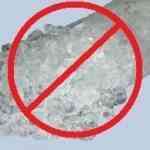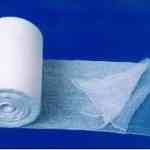How To Treat A Motorcycle Exhaust Burn With Basic First Aid
**Before you read any further, please use common sense, if your exhaust burn symptoms increase in severity, seek medical attention immediately! This article is for learning about burns and treatment before they happen!**
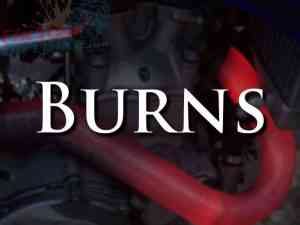 Riding a machine powered by controlled explosions, your exhaust will get hot. When you go camping, you will most likely build a fire, which gets hot. When cooking over that fire, your pots and pans will get HOT!. Humanity has used fire to advance civilization over thousands of years, and fire can’t tell the difference between you and a hot dog. So always be mindful of where the hot is so you can avoid it.
Riding a machine powered by controlled explosions, your exhaust will get hot. When you go camping, you will most likely build a fire, which gets hot. When cooking over that fire, your pots and pans will get HOT!. Humanity has used fire to advance civilization over thousands of years, and fire can’t tell the difference between you and a hot dog. So always be mindful of where the hot is so you can avoid it.
No matter how careful you are, though, burns happen. This article will show you how to identify the degree and how to treat skin burns with basic first aid.
The first step in treating an exhaust burn is to determine its type: first, second, or third degree. The most effective way to determine the type of burn is to evaluate the extent of the damage caused by the trauma – or, to be even more specific, the layer of skin affected by the burn. The more layers of skin damaged by the injury, the more serious the condition will be.
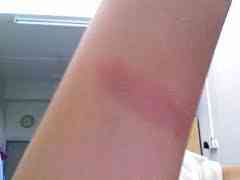
First-Degree Exhaust Burn
First-degree burns damage the first layer of skin. One of the more common forms of a first-degree burn is the common sunburn.
Common symptoms associated with first-degree burns are a reddening of the affected area, mild swelling, and mild pain. The typical recovery time for a standard first-degree exhaust burn is 2-3 days.
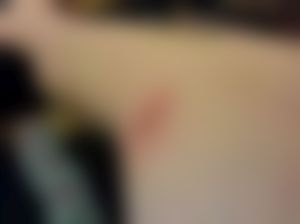
Second-Degree Muffler Burn
Second-degree burns damage both the first and second layers of skin. These burns are most commonly caused by exposed skin making contact with your motorcycle exhaust pipe, and by exposure to open flames or scalding liquid, like the coolant in your radiator.
Symptoms associated with second-degree burns are the same symptoms associated with first-degree burns, but with more severe pain and possible blisters. The typical recovery time for a standard second-degree exhaust burn is 2-3 weeks.

Third-Degree Exhaust Pipe Burns
Third-degree burns are the most dangerous type of burn and damage all layers of skin down to the muscle or bone. These burns are also caused by direct contact with hot objects, flames, and scalds, with the difference being a more intense exposure than with second-degree burns.
Common symptoms associated with third-degree exhaust pipe burns include black, white, or yellow skin, massive amounts of swelling, leathery texture, and a lack of pain due to nerve and tissue damage. Depending on the severity of the burn, recovery from third-degree burns can last anywhere from several weeks to several years.
Treating First & Second-Degree Burns
First and second-degree burns are, for the most part, managed using the same methods using basic first aid. There are certain occasions where second-degree burns will be treated differently. Below, I’ve listed out the proper procedures under each circumstance.
First and (Mild) Second-Degree Exhaust Burn Treatment
- Flush the affected area with COOL water (NOT cold water). Cold water (or ice) can lower the person’s body temperature and cause further damage to the affected area.
- Submerge the affected area in cool water for 10-15 minutes.
- Cover the area with a sterile gauze pad, or the Ace bandage from your trail pack. Gauze keeps air off of the burn and helps reduce pain. Make sure the pad fits loose over the area. Adding too much pressure can potentially cause further damage to the skin.
Serious Second-Degree Muffler Burn First Aid
If a second-degree exhaust burn causes blisters and covers a significant area on the person’s skin, then further treatment is required beyond basic first aid to properly care for the burned area.
If Blisters Are Present
- Follow Steps 1-3 above. Make sure to keep the gauze pad loose (this will prevent blisters from popping).
- DO NOT POP any blisters that form on the surface of the burn. These blisters have developed to help heal the affected area, and popping them could result in further complications and more pain.
If second-degree burns cover three inches or more of surface area:
- Follow the same steps found in Third-Degree Burn Treatment.
Third-Degree Exhaust Pipe Burn First Aid
You must get medical help immediately in all scenarios. If you have a cell phone, contact 911 immediately. If not, utilize the steps below, followed by immediate transportation to the nearest medical center.
- Do NOT remove any clothing, accessories, or other material from the burned area under any circumstances. Doing so could cause further damage.
- Do NOT submerge the burn in cool water. Cold water could potentially cause hypothermia or shock.
- Dress the affected area(s) with clean, cool, moist bandages. Do not apply pressure on the bandages. Let them rest lightly over the wound.
- Elevate the affected area, if possible, to further reduce swelling. (Rise above the level of the person’s heart.)
- If medical support cannot be acquired in 24 hours or longer, redress the burned area with clean, cool, moist bandages every other day. Make sure to dampen the old dressing before removing it.
**Use common sense, if you think you need medical attention, get it! Improper treatment of burns can lead to lifelong scarring!**
If you have any questions or anything to add, please leave them in the comments or on our FaceBook page!


